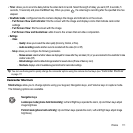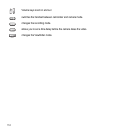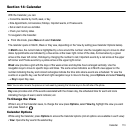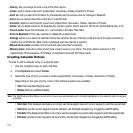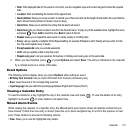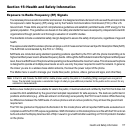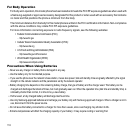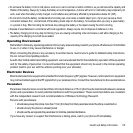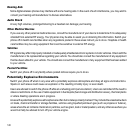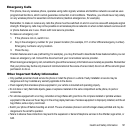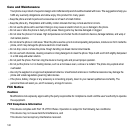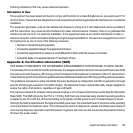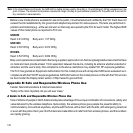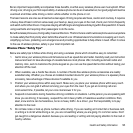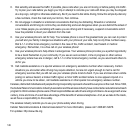Health and Safety Information 119
•
Do not leave the battery in hot or cold places, such as in a car in summer or winter conditions, as you will reduce the capacity and
lifetime of the battery. Always try to keep the battery at room temperature. A phone with a hot or cold battery may temporarily not
work, even when the battery is fully charged. Li-ion batteries are particularly affected by temperatures below 0C (32F).
•
Do not short-circuit the battery. Accidental short-circuiting can occur when a metallic object (coin, clip or pen) causes a direct
connection between the + and terminals of the battery (metal strips on the battery), for example when you carry a spare battery
in a pocket or bag. Short circuiting the terminals may damage the battery or the object causing the short-circuiting.
•
Dispose of used batteries in accordance with local regulations. Always recycle. Do not dispose of batteries in a fire.
•
The battery charging circuit may stop functioning if you are viewing a streaming video and receive a call while charging as the
capacity of the charging circuit will be exceeded.
Operating Environment
Remember to follow any special regulations in force in any area and always switch your phone off whenever it is forbidden
to use it, or when it may cause interference or danger.
When connecting the phone or any accessory to another device, read its user’s guide for detailed safety instructions.
Do not connect incompatible products.
As with other mobile radio transmitting equipment, users are advised that for the satisfactory operation of the equipment
and for the safety of personnel, it is recommended that the equipment should only be used in the normal operating
position (held to your ear with the antenna pointing over your shoulder).
Electronic Devices
Most modern electronic equipment is shielded from radio frequency (RF) signals. However, certain electronic equipment
may not be shielded against the RF signals from your wireless phone. Consult the manufacturer to discuss alternatives.
Pacemakers
Pacemaker manufacturers recommend that a minimum distance of 15 cm (6 inches) be maintained between a wireless
phone and a pacemaker to avoid potential interference with the pacemaker. These recommendations are consistent
with the independent research and recommendations of Wireless Technology Research.
Persons with pacemakers:
•
should always keep the phone more than 15 cm (6 inches) from their pacemaker when the phone is switched on.
•
should not carry the phone in a breast pocket.
•
should use the ear opposite the pacemaker to minimize potential interference.
If you have any reason to suspect that interference is taking place, switch your phone off immediately.



